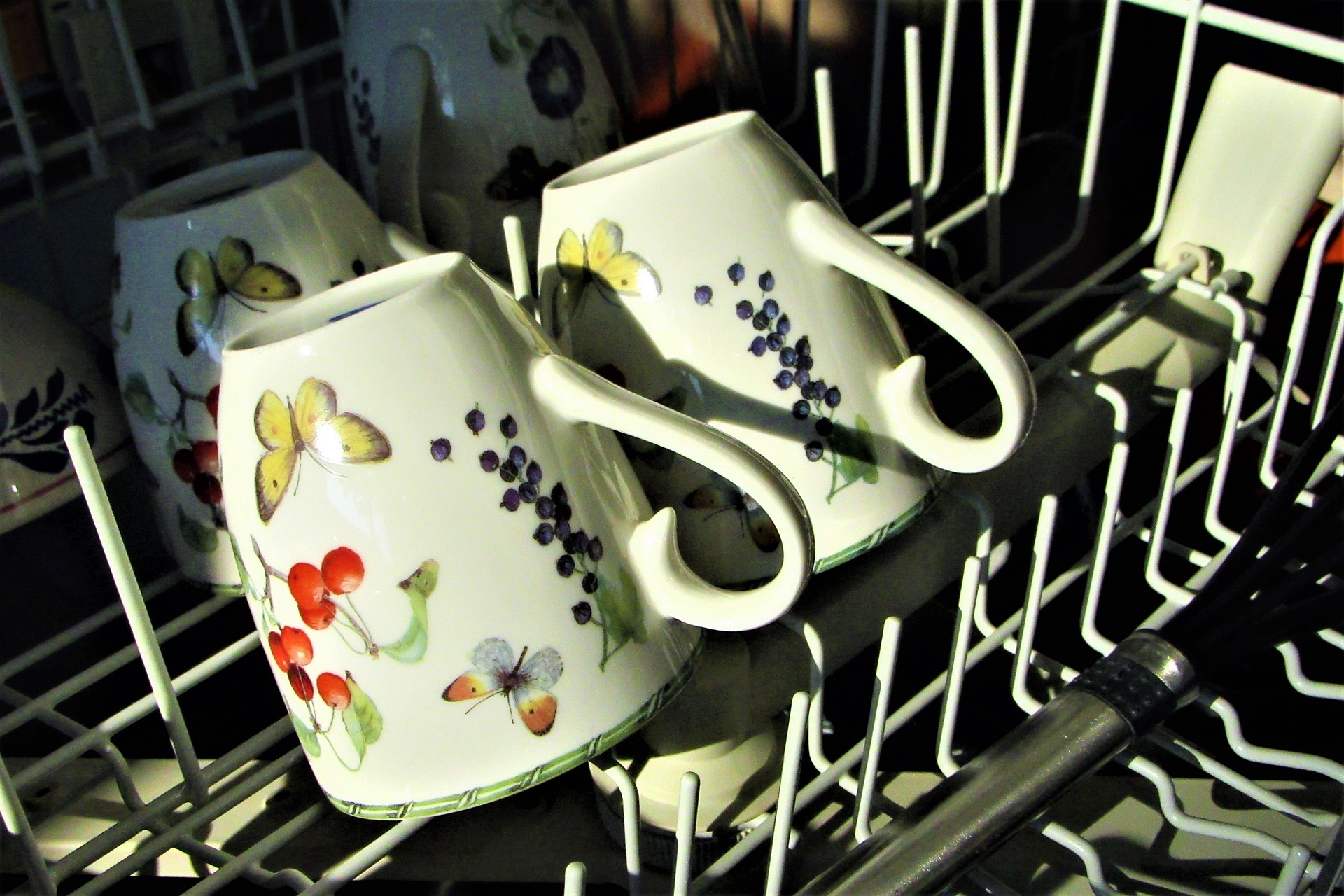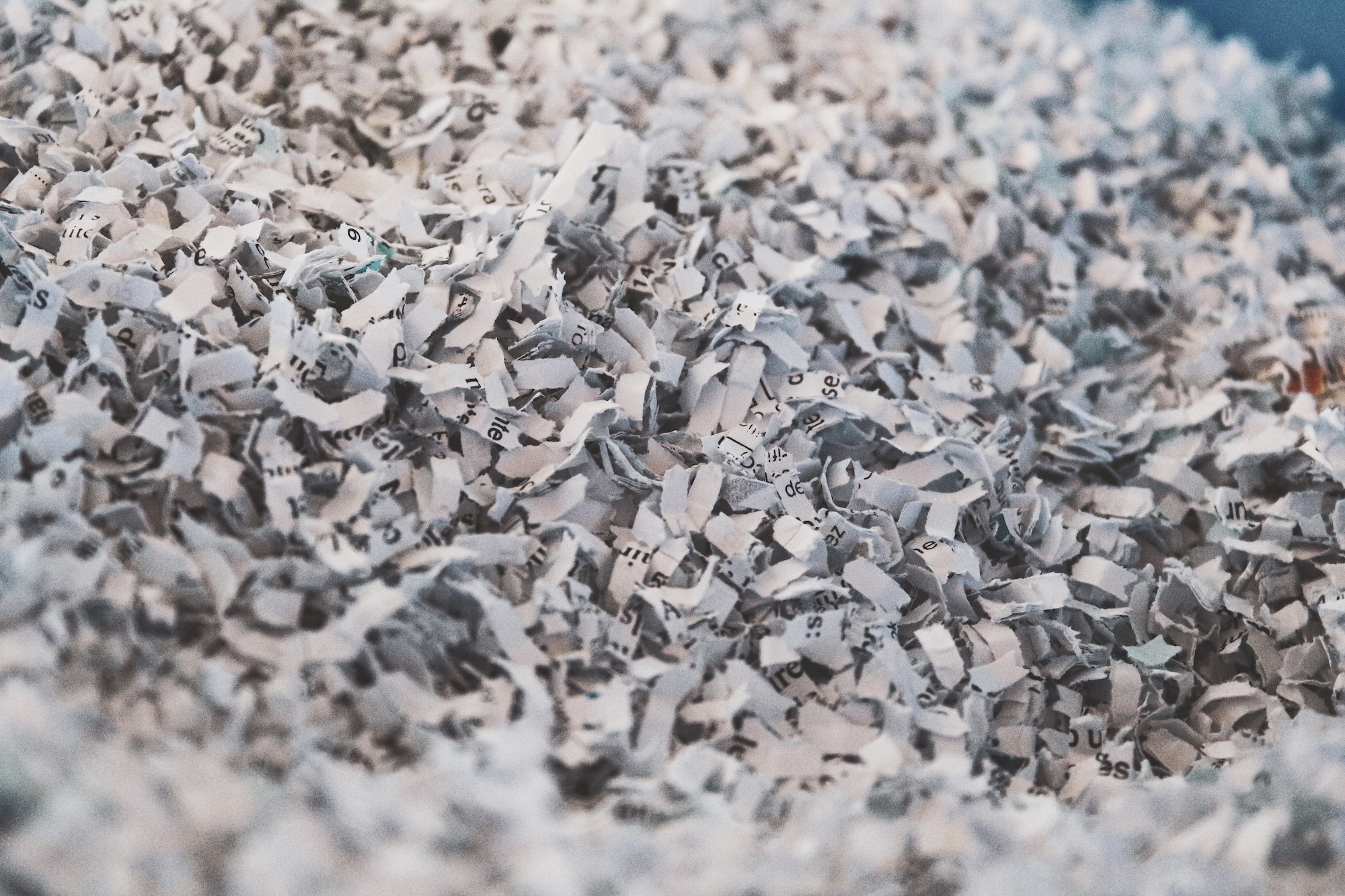A dishwasher is a modern convenience that makes our lives easier by handling the tedious task of cleaning dishes. However, this appliance can become a breeding ground for mold if not properly maintained. Mold not only affects the dishwasher’s performance but also poses health risks. This guide will provide an in-depth, step-by-step approach to cleaning a dishwasher of mold, covering all aspects from prevention to cleaning techniques and maintenance tips. By following this guide, you can ensure your dishwasher remains mold-free and operates efficiently.
Understanding Mold
1.1 What is Mold?
Mold is a type of fungus that thrives in moist, warm environments. It reproduces through tiny spores that float through the air. When these spores land on a damp surface, they can grow and form mold colonies. Mold can appear in various colors, including black, green, white, and orange, and it often has a musty odor.
1.2 Common Types of Mold Found in Dishwashers
- Aspergillus: Often found in damp environments, Aspergillus can cause allergic reactions and respiratory issues.
- Penicillium: Known for its blue or green color, this mold can grow on food and damp surfaces, potentially causing allergic reactions.
- Cladosporium: This mold can appear in black, brown, or green and can grow in both warm and cool environments.
- Stachybotrys (Black Mold): Typically black or dark green, Stachybotrys is known for producing mycotoxins, which can pose serious health risks.
1.3 Health Risks of Mold Exposure
Exposure to mold can cause various health problems, particularly for individuals with allergies, asthma, or weakened immune systems. Symptoms can include:
- Sneezing
- Coughing
- Itchy or watery eyes
- Skin rashes
- Respiratory issues
- Headaches
- Fatigue
In severe cases, mold exposure can lead to serious respiratory infections and other health complications.
Causes of Mold in Dishwashers
2.1 Moisture
Dishwashers operate with water, making them inherently moist environments. Moisture can linger after the cleaning cycle, especially if the dishwasher is not properly dried.
2.2 Food Residue
Food particles left behind in the dishwasher can provide a food source for mold. These particles can accumulate in the filter, spray arms, and other crevices.
2.3 Poor Ventilation
Lack of proper ventilation can trap moisture inside the dishwasher, creating an ideal environment for mold growth.
2.4 Detergent and Rinse Aid Residue
Residue from detergents and rinse aids can build up over time, providing a surface for mold to grow on. Additionally, using too much detergent can contribute to this problem.
Preventing Mold in Dishwashers
3.1 Regular Cleaning
Regular cleaning is essential to prevent mold growth. This includes wiping down the interior, cleaning the filter, and running cleaning cycles.
3.2 Proper Loading and Unloading
Loading the dishwasher properly ensures that water can circulate freely, improving cleaning efficiency and reducing the chances of mold growth. After the cycle, leave the door open for a while to allow the interior to dry.
3.3 Using the Right Detergents
Using high-quality, mold-resistant detergents can help prevent mold growth. Avoid using excessive amounts of detergent to minimize residue buildup.
3.4 Ensuring Proper Ventilation
Proper ventilation is crucial for preventing mold. Ensure that the dishwasher has adequate air circulation by leaving the door open slightly after each use.
3.5 Periodic Deep Cleaning
Performing a deep clean of your dishwasher every few months can help keep mold at bay. This includes cleaning all components thoroughly and using specialized cleaning agents.
Identifying Mold in Your Dishwasher
4.1 Visual Inspection
Regularly inspect your dishwasher for visible signs of mold. Look for black, green, or white spots, particularly around the door gasket, filter, and spray arms.
4.2 Odor Detection
A musty or moldy smell coming from your dishwasher is a strong indication of mold presence. Pay attention to any unusual odors when you open the dishwasher door.
4.3 Health Symptoms
If you or your family members experience unexplained allergic reactions, respiratory issues, or other symptoms, mold in the dishwasher could be a contributing factor.
Preparing to Clean Your Dishwasher
5.1 Safety Precautions
Before cleaning your dishwasher, take the following safety precautions:
- Wear rubber gloves to protect your hands from cleaning agents and mold spores.
- Use a face mask to avoid inhaling mold spores.
- Ensure proper ventilation in the kitchen by opening windows or using exhaust fans.
5.2 Gathering Cleaning Supplies
You’ll need the following supplies to clean your dishwasher:
- Rubber gloves
- Face mask
- Soft cloths or sponges
- Toothbrush or small scrub brush
- Dish soap
- White vinegar
- Baking soda
- Commercial dishwasher cleaner (optional)
- Spray bottle
- Screwdriver (if needed for removing parts)
Step-by-Step Cleaning Process
6.1 Initial Cleaning and Inspection
- Turn Off and Empty the Dishwasher: Ensure the dishwasher is turned off and unplugged. Remove any dishes, utensils, and racks.
- Remove Food Debris: Wipe away any visible food debris from the interior and filter area.
- Inspect Components: Check the door gasket, filter, spray arms, and other components for signs of mold and buildup.
6.2 Cleaning the Filter
- Remove the Filter: Consult your dishwasher’s manual to locate and remove the filter.
- Soak and Scrub the Filter: Soak the filter in warm, soapy water. Use a toothbrush or small scrub brush to remove mold and debris.
- Rinse and Dry: Rinse the filter thoroughly with clean water and let it dry before reinstalling.
6.3 Cleaning the Spray Arms
- Remove the Spray Arms: Follow your dishwasher’s manual to remove the spray arms.
- Clean the Spray Arms: Use a small brush to remove any mold and debris from the spray arms’ holes.
- Rinse and Reinstall: Rinse the spray arms with clean water and reinstall them in the dishwasher.
6.4 Cleaning the Interior
- Wipe Down the Interior: Use a soft cloth or sponge with warm, soapy water to wipe down the interior walls, door, and door gasket.
- Target Mold Spots: Spray a mixture of equal parts white vinegar and water on moldy areas. Let it sit for 10-15 minutes before scrubbing with a brush.
- Rinse and Dry: Wipe down the interior with a clean, damp cloth to remove any remaining cleaning solution. Leave the door open to air dry.
6.5 Deep Cleaning Cycle
- Vinegar Wash: Place a cup of white vinegar in a dishwasher-safe container on the top rack. Run a hot water cycle to disinfect and remove odors.
- Baking Soda Rinse: Sprinkle a cup of baking soda on the bottom of the dishwasher and run a short, hot water cycle to further deodorize and clean.
- Commercial Cleaner (Optional): Use a commercial dishwasher cleaner according to the manufacturer’s instructions for an extra deep clean.
Maintaining a Mold-Free Dishwasher
7.1 Regular Maintenance Routine
- Weekly: Wipe down the door gasket and remove food debris from the interior.
- Monthly: Clean the filter and spray arms.
- Quarterly: Perform a deep cleaning cycle with vinegar and baking soda.
7.2 Proper Use and Care
- Load Properly: Ensure dishes are not overcrowded to allow proper water circulation.
- Use Appropriate Detergents: Choose high-quality detergents that prevent mold growth and avoid using excessive amounts.
7.3 Monitoring for Mold
Regularly inspect your dishwasher for signs of mold and address any issues promptly to prevent recurrence.
Troubleshooting Common Issues
8.1 Persistent Mold
If mold keeps returning despite regular cleaning, consider the following:
- Check for Leaks: Inspect the dishwasher for leaks that could be causing excess moisture.
- Improve Ventilation: Ensure the kitchen has proper ventilation to reduce humidity levels.
- Replace Gaskets: Worn or damaged door gaskets can trap moisture and promote mold growth.
8.2 Dishwasher Not Cleaning Properly
If your dishwasher is not cleaning dishes effectively, it may be due to mold buildup:
- Clean Components: Ensure the filter, spray arms, and interior are free of mold and debris.
- Use the Right Detergent: Ensure you are using the appropriate detergent and the correct amount.
- Check Water Temperature: Verify that your water heater is set to the recommended temperature for your dishwasher.
Advanced Cleaning Techniques
9.1 Using Bleach (with Caution)
Bleach can be effective for severe mold problems, but it should be used with caution:
- Dilute Bleach: Mix 1 tablespoon of bleach with 1 gallon of water.
- Apply Bleach Solution: Use a cloth or sponge to apply the bleach solution to moldy areas.
- Rinse Thoroughly: Rinse the interior with clean water to remove any bleach residue.
9.2 Professional Cleaning Services
If mold persists despite your efforts, consider hiring a professional appliance cleaning service. Professionals have specialized tools and knowledge to thoroughly clean and disinfect your dishwasher.
Eco-Friendly Cleaning Alternatives
10.1 Natural Cleaning Agents
- Lemon Juice: Use lemon juice to clean and deodorize the dishwasher. Place a cup of lemon juice in the top rack and run a hot water cycle.
- Hydrogen Peroxide: Spray hydrogen peroxide on moldy areas, let it sit for 10 minutes, then scrub and rinse.
- Tea Tree Oil: Mix a few drops of tea tree oil with water in a spray bottle. Spray on moldy areas, let it sit, then scrub and rinse.
10.2 Homemade Cleaning Solutions
- Vinegar and Baking Soda Paste: Mix vinegar and baking soda to form a paste. Apply to moldy areas, let it sit for 15 minutes, then scrub and rinse.
- Borax Solution: Dissolve 1/4 cup of borax in 1 quart of water. Use this solution to scrub moldy surfaces.
FAQs
What causes mold to grow in a dishwasher?
Mold grows in dishwashers due to the presence of moisture, food particles, poor ventilation, and detergent residue.
How can I prevent mold from forming in my dishwasher?
Regular cleaning, proper loading and unloading, using the right detergents, ensuring proper ventilation, and periodic deep cleaning can help prevent mold.
What are the health risks associated with mold in a dishwasher?
Exposure to mold can cause allergic reactions, respiratory issues, skin rashes, headaches, and fatigue. Severe exposure can lead to serious respiratory infections.
How often should I clean my dishwasher to prevent mold?
Regular maintenance, including weekly wipe-downs, monthly filter and spray arm cleaning, and quarterly deep cleaning cycles, is recommended.
What supplies do I need to clean mold from my dishwasher?
Rubber gloves, a face mask, soft cloths or sponges, a toothbrush or small scrub brush, dish soap, white vinegar, baking soda, a commercial dishwasher cleaner (optional), a spray bottle, and a screwdriver (if needed).
Is it safe to use bleach to clean my dishwasher?
Bleach can be effective for severe mold problems but should be used with caution. Dilute bleach and rinse thoroughly to avoid residue.
Can I use natural cleaning agents to clean mold from my dishwasher?
Yes, natural cleaning agents like lemon juice, hydrogen peroxide, and tea tree oil can effectively clean mold.
What is the best way to dry my dishwasher to prevent mold?
Leave the dishwasher door slightly open after each cycle to allow air circulation and moisture evaporation.
How do I clean the filter in my dishwasher?
Remove the filter, soak it in warm, soapy water, scrub with a brush to remove debris and mold, rinse thoroughly, and let it dry before reinstalling.
Why does my dishwasher have a musty odor?
A musty odor is usually a sign of mold or mildew growth due to trapped moisture and food particles.
Can mold in my dishwasher spread to my dishes?
Yes, mold can spread to your dishes, potentially causing health risks when using those dishes.
What are the signs of mold in a dishwasher?
Visible black, green, or white spots, a musty smell, and unexplained allergic reactions or respiratory issues are signs of mold.
How can I improve ventilation in my dishwasher?
Ensure the dishwasher has proper air circulation by leaving the door open slightly after each use and making sure the kitchen has good ventilation.
What is the best detergent to use to prevent mold in my dishwasher?
Use high-quality, mold-resistant detergents and avoid using excessive amounts to prevent residue buildup.
How do I clean the spray arms in my dishwasher?
Remove the spray arms, clean them with a brush to remove mold and debris, rinse thoroughly, and reinstall them.
Can I use vinegar to clean mold in my dishwasher?
Yes, vinegar is effective for cleaning mold. Run a hot water cycle with a cup of vinegar on the top rack.
How do I remove mold from the door gasket of my dishwasher?
Wipe the door gasket with a cloth soaked in a mixture of water and vinegar, let it sit for a few minutes, then scrub with a brush.
Is it necessary to wear protective gear when cleaning mold from a dishwasher?
Yes, wearing rubber gloves and a face mask helps protect against mold spores and cleaning agents.
How can I prevent food particles from causing mold in my dishwasher?
Rinse dishes before loading, clean the filter regularly, and ensure proper water circulation by not overloading the dishwasher.
Can I run an empty cycle to clean my dishwasher?
Yes, running an empty cycle with vinegar or a commercial dishwasher cleaner helps disinfect and remove odors.
How do I remove mold from hard-to-reach areas in my dishwasher?
Use a toothbrush or small scrub brush to reach and clean tight spots where mold may grow.
What is the role of baking soda in cleaning a dishwasher?
Baking soda helps deodorize and further clean the dishwasher when used in a rinse cycle.
Can mold in the dishwasher affect the taste of my food?
Yes, mold can affect the taste and smell of your dishes, impacting your food’s quality.
How do I clean the dishwasher drain to prevent mold?
Regularly check and clean the dishwasher drain to remove food particles and debris that can harbor mold.
Why does mold keep returning in my dishwasher?
Persistent mold can be due to leaks, poor ventilation, or not thoroughly cleaning all components. Addressing these issues can help.
What are the benefits of using a commercial dishwasher cleaner?
Commercial cleaners are formulated to remove buildup and disinfect the dishwasher, helping to prevent mold and improve performance.
How do I clean the interior of my dishwasher?
Wipe down the interior with warm, soapy water, spray vinegar on moldy areas, scrub, and rinse thoroughly.
Can I use essential oils to clean mold from my dishwasher?
Yes, tea tree oil is effective against mold. Mix a few drops with water in a spray bottle, apply to moldy areas, scrub, and rinse.
What should I do if my dishwasher smells moldy even after cleaning?
Ensure all components are thoroughly cleaned, check for hidden mold, and improve ventilation to eliminate lingering odors.
How do I know if my dishwasher needs a deep clean?
Signs include visible mold, persistent odors, poor cleaning performance, and frequent allergic reactions.
Can I use hydrogen peroxide to clean my dishwasher?
Yes, hydrogen peroxide is an effective natural cleaner. Spray it on moldy areas, let it sit, scrub, and rinse.
How do I clean the silverware basket in my dishwasher?
Remove the basket, soak it in warm, soapy water, scrub with a brush to remove mold and debris, rinse thoroughly, and let it dry.
What are the benefits of regularly maintaining my dishwasher?
Regular maintenance prevents mold, improves cleaning performance, extends the appliance’s life, and ensures a healthier kitchen environment.
Can I use baking soda and vinegar together to clean my dishwasher?
Yes, combining baking soda and vinegar creates a foaming action that helps clean and deodorize the dishwasher.
How do I clean the dishwasher racks?
Remove the racks, soak them in warm, soapy water, scrub with a brush, rinse thoroughly, and let them dry before reinserting.
Why is it important to clean the door gasket?
The door gasket can trap moisture and food particles, creating an ideal environment for mold growth.
What is the best way to load my dishwasher to prevent mold?
Load dishes properly to ensure water circulation, avoid overcrowding, and rinse dishes before loading to reduce food particles.
Can I use lemon juice to clean mold from my dishwasher?
Yes, lemon juice is effective for cleaning and deodorizing. Run a hot water cycle with a cup of lemon juice on the top rack.
How do I clean the dishwasher’s spray nozzles?
Use a small brush or toothpick to clean the spray nozzles, removing any mold and debris that may be clogging them.
Is it necessary to clean the dishwasher door seal?
Yes, cleaning the door seal helps prevent mold growth and ensures a tight seal during operation.
Can mold in my dishwasher affect my health?
Yes, mold exposure can cause allergic reactions, respiratory issues, and other health problems.
How do I remove mold from the dishwasher door?
Wipe the door with a cloth soaked in a vinegar-water mixture, scrub moldy areas with a brush, and rinse thoroughly.
How do I ensure my dishwasher is properly ventilated?
Leave the door open slightly after each cycle and ensure your kitchen has good ventilation to reduce humidity.
What is the best way to clean mold from a stainless steel dishwasher interior?
Use a mixture of vinegar and water to wipe down the interior, scrub moldy areas with a brush, and rinse thoroughly.
Can I use borax to clean my dishwasher?
Yes, dissolve 1/4 cup of borax in 1 quart of water, scrub moldy surfaces with the solution, and rinse thoroughly.
How do I clean the dishwasher’s heating element?
Unplug the dishwasher, wipe the heating element with a cloth soaked in vinegar, and ensure it is thoroughly dry before plugging it back in.
How do I clean the exterior of my dishwasher?
Wipe the exterior with a damp cloth and mild detergent, then dry with a soft cloth to prevent water spots.
Why is my dishwasher not cleaning properly after I cleaned it?
Ensure all components are reassembled correctly, use the right detergent, and check the water temperature for optimal cleaning performance.
Conclusion
Cleaning a dishwasher of mold requires diligence, the right techniques, and regular maintenance. By understanding the causes of mold, taking preventive measures, and following a thorough cleaning routine, you can keep your dishwasher mold-free and ensure it operates efficiently.
Regular inspections and prompt action when mold is detected will help maintain a healthy and clean appliance, contributing to the overall well-being of your household. Remember, a well-maintained dishwasher not only performs better but also extends the life of the appliance, making your investment worthwhile.



